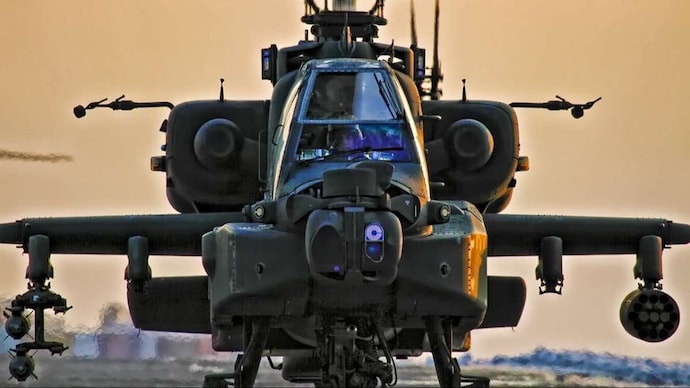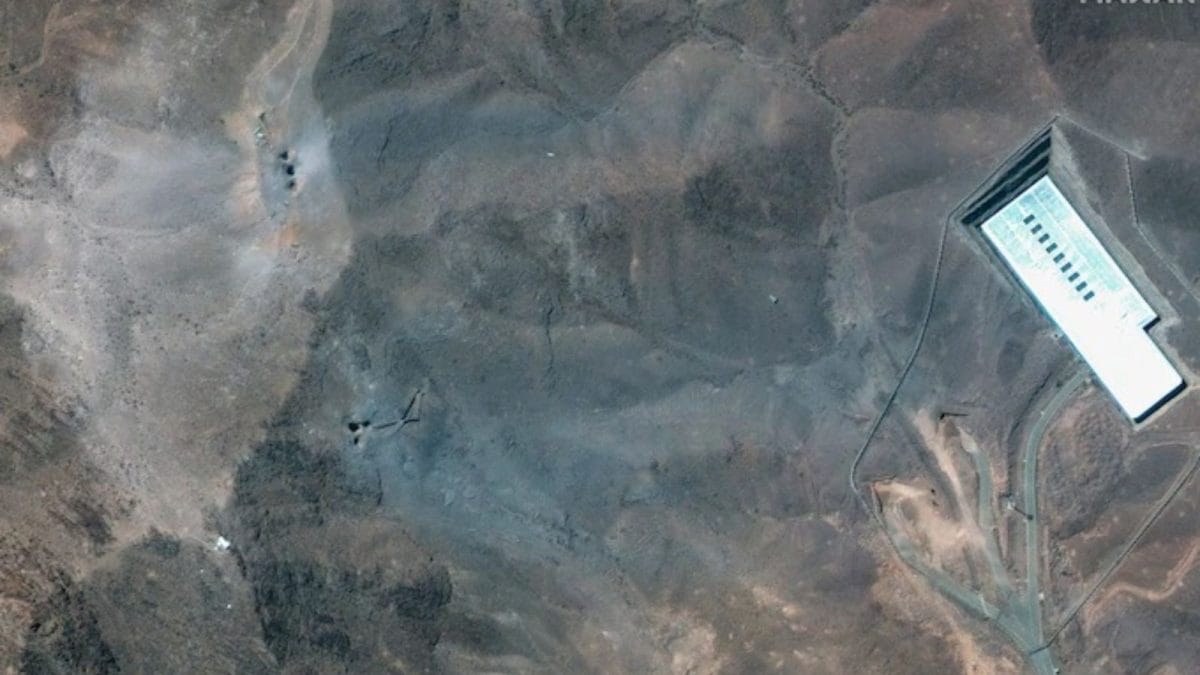ARTICLE AD BOX
The delivery of Apache AH-64E attack helicopters from the United States has missed multiple deadlines. As part of a $600 million deal signed in 2020 with the US, the Indian Army expected delivery of six Apache helicopters by May-June 2024.

Army raised the first squadron of Apache Helicopters in Jodhpur near Pakistan border. (PTI/Representational)
After Operation Sindoor, while the Army focuses on enhancing its combat capabilities along the western border, the long wait for the first batch of Apache combat helicopters appears to be over.
Following a delay of over 15 months, delivery of Apache attack helicopters that are to be deployed on the western border is likely to start soon.
The Army Aviation Corps raised its first Apache squadron in March 2024 in Jodhpur, but after almost 15 months of its raising, the squadron remains sans the attack helicopters.
The delivery of Apache AH-64E attack helicopters from the United States has missed multiple deadlines. As part of a $600 million deal signed in 2020 with the US, the Indian Army expected delivery of six Apache helicopters by May-June 2024. However, the timeline was shifted to December 2024 due to supply chain disruption.
Sources, aware of the delivery schedule, indicate that the first batch of these helicopters can be handed over to Indian Army’s Aviation Corps by this month.
Originally, six helicopters were planned to arrive in batches of three. The first batch was expected between May and June in 2024. However, the helicopters have yet to reach India, leaving the Army's first Apache Squadron in anticipation.
As part of a $600 million deal signed with the US in 2020, the Indian Army is set to receive six Apache helicopters. The first batch, however, has already faced a delay of over a year now.
Sources in the Defence Ministry indicate that this delay is due to technical issues faced by the US. The first batch of three helicopters is likely to be delivered in the coming weeks while the second batch of remaining three helicopters will reach India later this year.
The Apache AH-64E attack helicopters are intended to support the Army’s crucial operations on the Western front. These advanced choppers are known for their agility, firepower, and advanced targeting systems. Unsurprisingly, the Army requires these attack helicopters as a major component of its arsenal.
The Indian Air Force has already inducted 22 Apache helicopters as part of a separate order signed in 2015, while the Indian Army is awaiting these advanced attack helicopters to bolster its capabilities.
The Indian Army's Aviation Corps is a critical component of the Army's operational capabilities, providing essential aerial support for a variety of missions. There is a focus on bolstering the deployments along the western border in the wake of Operation Sindoor but the US attack helicopters have still not been delivered. The other assets of the Indian Army's Aviation Corps include:
Helicopters:
Advanced Light Helicopter (ALH) Dhruv: an Indigenous multi-role helicopter used for various purposes, including transport, reconnaissance, and search and rescue missions. The Dhruv fleet remained grounded after a ICG ALH crashed in January this year while approvals were granted for operations due to the emerging situation post Pahalgam attack.
Rudra: An armed version of the ALH Dhruv, equipped with weapons for close air support and anti-tank missions.
Cheetah and Chetak: Light utility helicopters used for reconnaissance, casualty evacuation, and logistics.
Light Combat Helicopter (LCH): A newer addition designed for high-altitude operations, capable of carrying out offensive missions in support of ground troops.
Fixed-Wing Aircraft: Dornier 228: A light transport aircraft used for reconnaissance, logistics, and communication duties.
Unmanned Aerial Vehicles (UAVs):
Heron: Medium-altitude, long-endurance UAVs used for surveillance and reconnaissance.
Searcher: Tactical UAVs for shorter-range surveillance and reconnaissance missions.
Transport Helicopters:
Mi-17: Medium-lift helicopters used for troop transport, logistics, and evacuation missions.
These assets allow the Indian Army's Aviation Corps to conduct a wide range of operations, from battlefield support and reconnaissance to logistics and casualty evacuation, significantly enhancing the Army's overall effectiveness in various terrains and conditions.
- Ends
Published By:
Sayan Ganguly
Published On:
Jul 2, 2025



.png)
.png)
.png)
















 1 day ago
6
1 day ago
6










 English (US) ·
English (US) ·